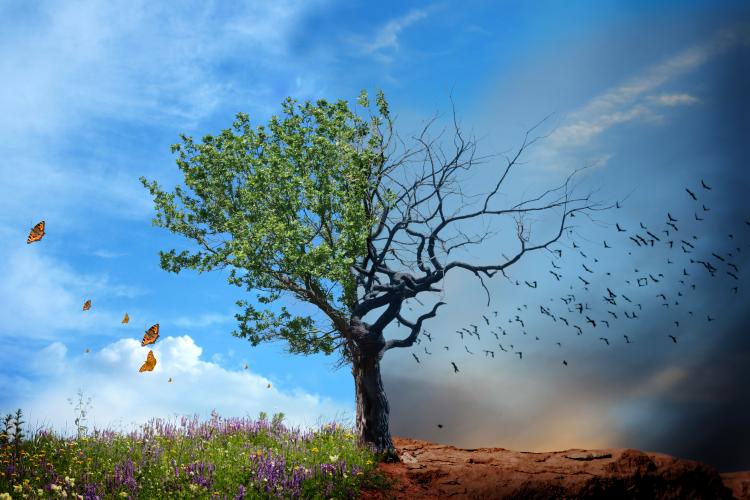
Do You Get a Black Moon?
What is a Black Moon, and why does it happen in December?

The United Nations’ (UN) International Day for Preventing the Exploitation of the Environment in War and Armed Conflict is annually held on November 6. It aims to educate people about the damaging effects of war and armed conflict on the environment.

The International Day for Preventing the Exploitation of the Environment in War and Armed Conflict helps people understand more about war's effects on the environment.
©bigstockphoto.com/lilkar
Many people around the world, including government officials, scientists, journalists, educators, and business people, observe the UN’s International Day for Preventing the Exploitation of the Environment in War and Armed Conflict. Those who take part in the day spend time discussing about how the effects of war are damaging to the natural environment. They also work together to find ways to limit environmental destruction caused by armed conflict and war.
Seminars, speeches, lectures, news articles, radio talks, and classroom activities in schools that focus on the topic are some of the events that take place on this day. People learn and share information about the dangers of new technologies in war such as depleted uranium ammunition, which poses unknown threats to the environment. People around the world are also made aware that all efforts must be taken to limit environmental destruction caused by conflict.
The United Nations’ (UN) International Day for Preventing the Exploitation of the Environment in War and Armed Conflict is not a public holiday so public life is not affected.
War and armed conflict has many damaging effects on the natural environment. For example, crops are destroyed, water supplies are poisoned and forests are burnt. New technology that is used for war means that the destruction and damage of the environment is more serious and the long-term consequences can be worse.
On November 5, 2001, the UN General Assembly declared November 6 of each year as the International Day for Preventing the Exploitation of the Environment in War and Armed Conflict (resolution 56/4). The assembly considered that that any environmental damage in times of armed conflict impairs ecosystems and natural resources long after the period of conflict. This damage can often extend beyond the limits of national territories and today’s generation. The assembly also recalled the United Nations Millennium Declaration, which emphasized the necessity of working to protect the environment.
The UN emblem is often found in online and print material used to promote events such as the United Nations’ (UN) International Day for Preventing the Exploitation of the Environment in War and Armed Conflict. The emblem consists of a projection of the globe centered on the North Pole. It depicts all continents except Antarctica and four concentric circles representing degrees of latitude. The projection is surrounded by images of olive branches, representing peace. The emblem is often blue, although it is printed in white on a blue background on the UN flag.
| Year | Weekday | Date | Name | Holiday Type |
|---|---|---|---|---|
| 2019 | Wed | Nov 6 | World Day to Protect the Environment in War | United Nations Observance |
| 2020 | Fri | Nov 6 | World Day to Protect the Environment in War | United Nations Observance |
| 2021 | Sat | Nov 6 | World Day to Protect the Environment in War | United Nations Observance |
| 2022 | Sun | Nov 6 | World Day to Protect the Environment in War | United Nations Observance |
| 2023 | Mon | Nov 6 | World Day to Protect the Environment in War | United Nations Observance |
| 2024 | Wed | Nov 6 | World Day to Protect the Environment in War | United Nations Observance |
| 2025 | Thu | Nov 6 | World Day to Protect the Environment in War | United Nations Observance |
| 2026 | Fri | Nov 6 | World Day to Protect the Environment in War | United Nations Observance |
| 2027 | Sat | Nov 6 | World Day to Protect the Environment in War | United Nations Observance |
| 2028 | Mon | Nov 6 | World Day to Protect the Environment in War | United Nations Observance |
| 2029 | Tue | Nov 6 | World Day to Protect the Environment in War | United Nations Observance |
While we diligently research and update our holiday dates, some of the information in the table above may be preliminary. If you find an error, please let us know.

What is a Black Moon, and why does it happen in December?

When will the next comet be visible?

Why do mornings keep getting darker after the December solstice?

How does the 12-hour clock system work? Is midnight 12 am or 12 pm?